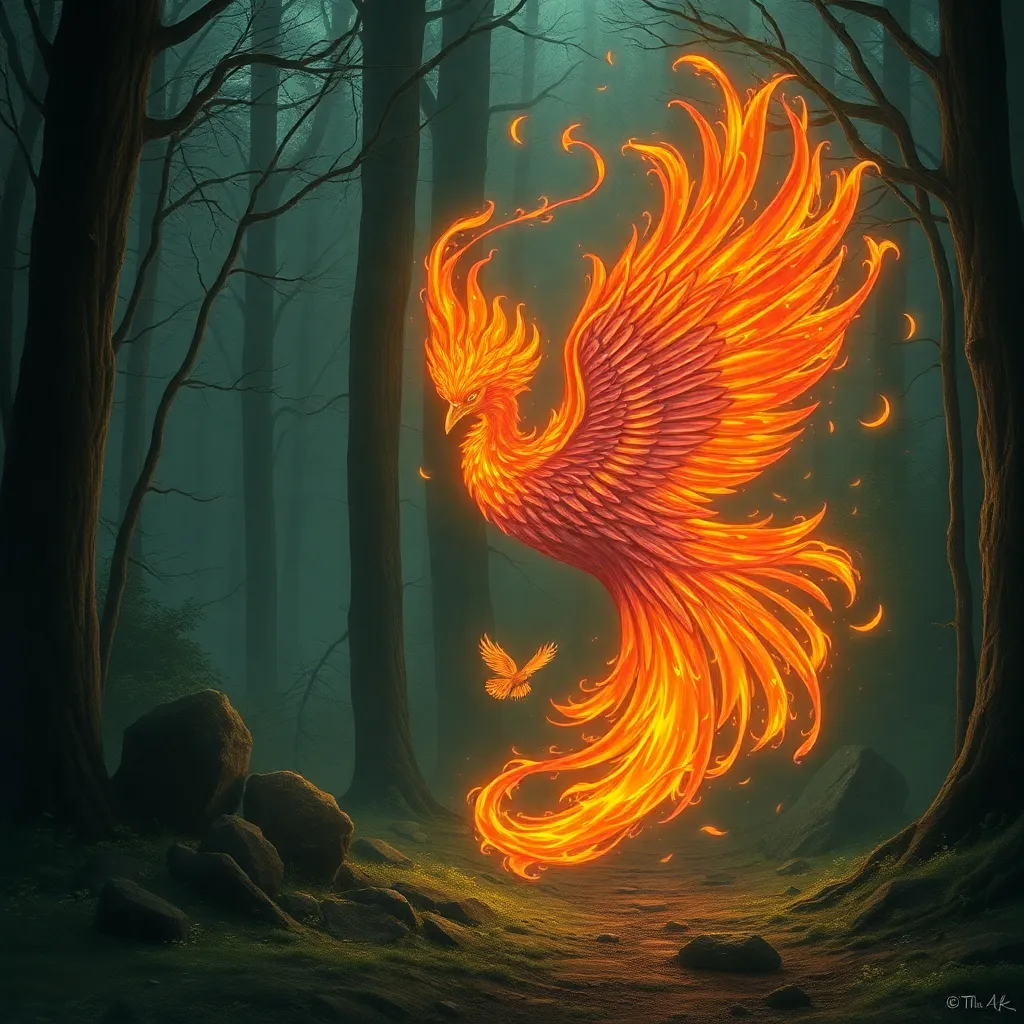From Forest to Feast: The Firebird’s Journey in Slavic Fairy Tales
I. Introduction
Slavic fairy tales are rich narratives woven into the cultural fabric of Eastern Europe, embodying the values, beliefs, and experiences of the Slavic peoples. These tales often feature magical creatures, heroic quests, and profound moral lessons, making them essential components of Slavic folklore. Among these enchanting stories, the Firebird stands out as a central figure, representing not only beauty and mystery but also transformation and hope.
The Firebird symbolizes transformation and the journey from adversity to abundance in Slavic folklore. Its story reflects the struggles and triumphs of heroes, offering insights into the human condition and the quest for fulfillment.
II. The Origins of the Firebird in Slavic Mythology
The Firebird has its roots deeply embedded in ancient Slavic mythology, where it represents a bridge between the earthly and the divine. Its appearance in folklore can be traced back to the pre-Christian era, when mythical creatures played a significant role in explaining natural phenomena and human experiences.
The Firebird is often depicted as a magnificent bird with glowing plumage, whose feathers shimmer in shades of red, gold, and orange. This ethereal creature embodies various symbolic meanings, including:
- Light and Hope: Its radiant feathers symbolize the light of hope in dark times.
- Transformation: The Firebird’s ability to rejuvenate and transform signifies the potential for change.
- Connection to the Divine: As a creature of magic, the Firebird bridges the gap between humans and the spiritual realm.
In Slavic tales, magical creatures like the Firebird serve as catalysts for the hero’s journey, often guiding or testing them in their quests.
III. The Firebird’s Role in the Hero’s Journey
The archetype of the hero is prevalent in Slavic fairy tales, characterized by bravery, resilience, and a quest for self-discovery. The Firebird often plays a crucial role in these narratives, acting as a catalyst for transformation, pushing heroes to confront their fears and challenges.
One of the most notable tales featuring the Firebird is “Ivan Tsarevich and the Firebird.” In this story, Ivan, a young prince, embarks on an adventurous quest after encountering the elusive Firebird. The bird steals golden apples from his father’s garden, prompting Ivan to capture it. His journey is filled with trials, including encounters with other magical beings, each teaching him valuable lessons about courage, wisdom, and the importance of compassion.
The Firebird’s role extends beyond mere companionship; it symbolizes the transformative power of adversity. As Ivan faces challenges, he learns to grow and evolve, ultimately leading him to a greater understanding of himself and his place in the world.
IV. The Themes of Transformation and Redemption
Transformation is a recurring theme in Slavic fairy tales, and the Firebird’s journey epitomizes this motif. Characters often undergo significant changes, both internally and externally, reflecting the belief that personal growth arises from overcoming obstacles.
The Firebird’s journey serves as a metaphor for personal growth, illustrating how challenges can lead to profound self-discovery. For instance, in “The Firebird and the Princess,” the hero must confront his shortcomings and fears to rescue a princess, ultimately leading to his redemption.
This journey of trials and tribulations resonates with audiences, offering the message that redemption is possible through perseverance and inner strength. The Firebird’s trials mirror those of the heroes, emphasizing that transformation is a universal experience.
V. The Symbolism of Abundance and Feasting
In Slavic folklore, the Firebird is often seen as a harbinger of prosperity and abundance. Its capture typically leads to a series of events that culminate in rewards and feasting, symbolizing the fruits of labor and the joy of communal celebration.
Feast scenes in Slavic fairy tales hold great significance, representing the culmination of a hero’s journey and the sharing of blessings with the community. These scenes often include:
- Gatherings: Families and friends come together to celebrate victories.
- Shared Abundance: The act of sharing food symbolizes community and unity.
- Cultural Traditions: Feasting reflects cultural heritage and the importance of tradition.
Through these celebrations, the tales reinforce the value of cooperation and the joy of abundance, mirroring the cyclical nature of life and the rewards of hard work.
VI. The Firebird’s Legacy in Contemporary Culture
The Firebird’s legacy extends beyond traditional tales; it has inspired countless adaptations in literature, art, and performance. Its story resonates with contemporary audiences, reflecting timeless themes of hope, transformation, and resilience.
In literature, the Firebird appears in various adaptations, including modern retellings that explore its symbolism in new contexts. Additionally, the Firebird has made a significant impact on the performing arts, notably in Igor Stravinsky’s ballet “The Firebird,” which showcases the creature’s magical essence through dance and music.
Modern Slavic artists continue to draw inspiration from the Firebird, illustrating its enduring appeal and relevance in contemporary culture. Its story serves as a reminder of the power of myth and its ability to connect generations.
VII. Comparative Analysis with Other Mythical Creatures
While the Firebird is unique to Slavic folklore, it shares similarities with other mythical birds, such as the Phoenix. Both creatures symbolize rebirth and transformation, embodying the idea that from destruction comes new life. However, there are distinct differences that highlight the unique cultural aspects of the Firebird:
- Origin and Cultural Significance: The Phoenix is rooted in Greco-Roman mythology, while the Firebird is distinctly Slavic.
- Nature of Transformation: The Firebird often represents hope and prosperity, while the Phoenix embodies cyclical rebirth through death.
- Role in Narratives: The Firebird actively aids heroes in their quests, while the Phoenix is more often a solitary figure.
These comparisons illustrate the universal themes of rebirth and transformation that transcend cultural boundaries while celebrating the unique storytelling traditions of the Slavic people.
VIII. Conclusion
In summary, the Firebird holds significant importance in Slavic fairy tales, symbolizing transformation, hope, and the journey from adversity to abundance. Its legacy continues to impact cultural identity, reminding us of the lessons embedded in these timeless stories. The Firebird’s journey resonates with the human experience, reinforcing the idea that through trials and tribulations, personal growth and redemption are possible.
As we reflect on the relevance of fairy tales, we recognize their role in shaping our understanding of ourselves and the world around us. The Firebird’s story, with its rich symbolism and profound themes, remains a vital part of Slavic folklore, inviting us to embrace our journeys and celebrate our transformations.



